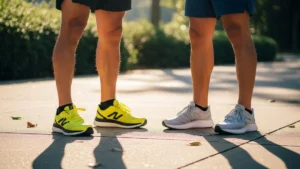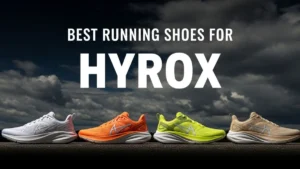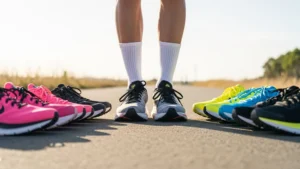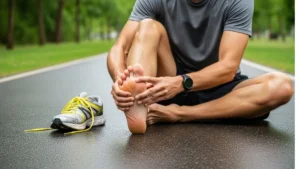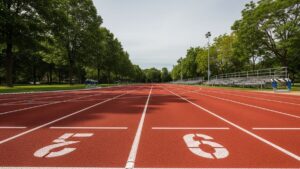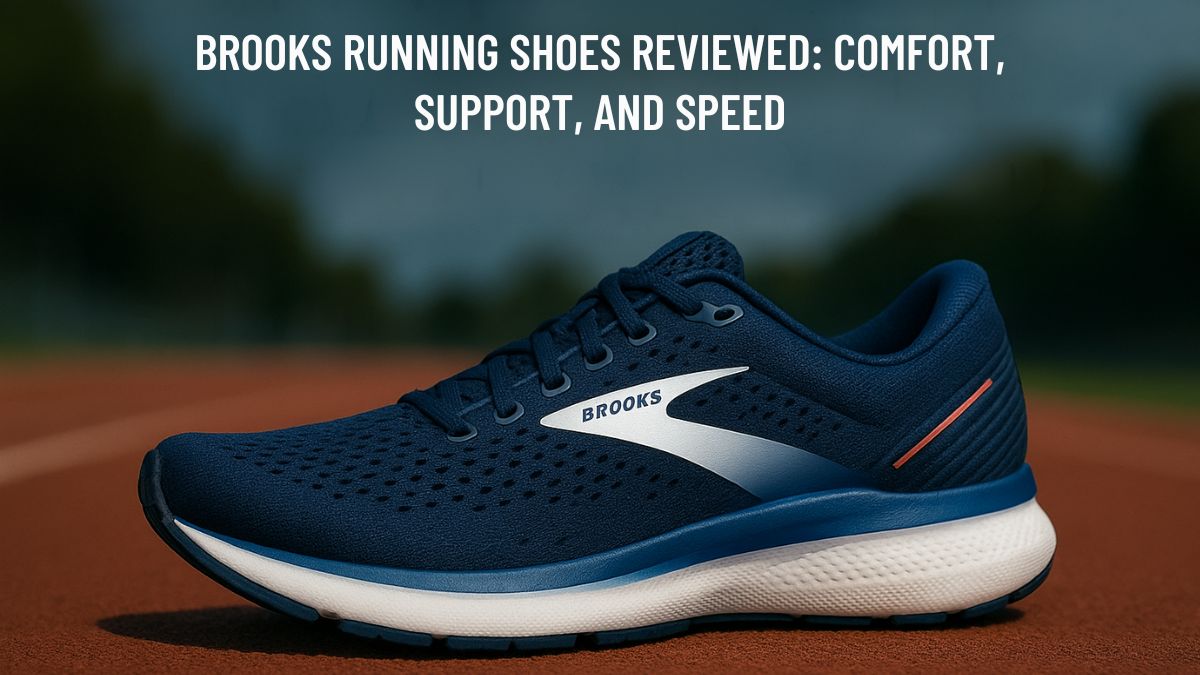
Are Brooks shoes good for running?
Yes, Brooks shoes are built for running. They focus on comfort, structure, and durability across various foot types. Most models balance cushioning and support, which helps reduce injury risk and fatigue during runs. Whether you’re training or racing, Brooks shoes are trusted by runners of all levels.
People don’t want flashy gimmicks when it comes to running. They want gear that works. Brooks does just that — solid shoes made for people who take their running seriously.
What’s the most comfortable Brooks shoe?
The most comfortable Brooks shoe is the Glycerin. It’s known for its soft, pillowy ride thanks to DNA LOFT cushioning. If you want maximum step-in comfort, especially on long runs or recovery days, Glycerin leads the pack.
Some call it “the couch of running shoes.” You slide into it, and your feet don’t want to come out. It’s that plush.
Which Brooks model is best for support?
The Brooks Adrenaline GTS is the best for support. It uses GuideRails to keep your stride aligned without overcorrecting. It’s ideal for overpronators or anyone needing extra stability.
You don’t feel boxed in — just gently guided. Think of it like guardrails on a highway: there if you need them, invisible if you don’t.
Do Brooks shoes help with speed or performance?
Yes, some Brooks models are made for speed. The Hyperion series is designed for fast turnover and racing, while the Levitate gives responsive bounce during workouts.
Not all Brooks shoes are bulky trainers. Some are race-day ready. The Hyperion Max, for example, is light, snappy, and feels like running on coiled springs.
How long do Brooks running shoes last?
Most Brooks shoes last between 300–500 miles. That’s about 4–6 months for regular runners. Lighter models wear faster, while cushioned ones like the Ghost or Adrenaline hold up longer.
You’ll feel it when it’s time to replace them. The bounce fades. The sole gets flat. A good rule? Track your mileage or swap out pairs every 5–6 months.
A Quick Snapshot: Brooks Running Shoe Lineup
Neutral vs Stability Shoes: What’s the Difference?
Neutral shoes are for runners with a natural stride, while stability shoes are built to support those who overpronate. Brooks makes both types to suit different foot mechanics and prevent injury.
If your ankle rolls inward while running, you likely need stability. If not, neutral models will feel more natural underfoot. It’s not a style thing — it’s how your body moves.
Ghost, Glycerin, Adrenaline, Levitate – Quick Overview
Ghost is the go-to for everyday neutral runners. Glycerin is the most cushioned. Adrenaline provides stability. Levitate gives bounce and energy return.
Here’s how they stack up:
- Ghost: Balanced, daily trainer
- Glycerin: Softest ride, premium cushion
- Adrenaline GTS: Stability with comfort
- Levitate: Springy and responsive
Each one has a clear purpose. No two feel the same.
Brooks Technology Breakdown (DNA LOFT, GuideRails, etc.)
DNA LOFT is Brooks’ soft cushioning. GuideRails support your stride. DNA AMP in the Levitate gives bounce. Each tech is tuned for a different run goal.
Here’s the plain-English breakdown:
- DNA LOFT = soft and smooth
- DNA AMP = energy return
- BioMoGo DNA = adaptive cushioning
- GuideRails = keeps your knees aligned
- Segmented Crash Pad = smooth heel-to-toe transition
Comfort Which Brooks Shoes Feel Best Underfoot?
Best For Plush Cushioning: Brooks Glycerin Series
The Brooks Glycerin series is the softest in the lineup. It’s built for max comfort with DNA LOFT v3, a thick, nitrogen-infused midsole that cushions every step. It’s ideal for long runs, recovery days, or anyone who wants that cloud-like feel.
Running in Glycerin feels like your feet are sinking into memory foam — but without the drag. It’s soft without being squishy. Perfect for anyone who doesn’t want to feel the pavement.
Best For Everyday Comfort: Brooks Ghost Series
The Brooks Ghost series is the go-to for balanced comfort. It blends soft cushioning with a smooth ride, making it ideal for daily runs and casual use. It’s not too soft, not too firm — just right.
Think of the Ghost as the all-day jeans of running shoes. Works for most people, feels good in most situations, and doesn’t need breaking in.
Lightweight Comfort: Brooks Launch Series
The Brooks Launch series offers lightweight comfort. It uses less cushion than Ghost or Glycerin, but still provides enough support for tempo runs and everyday wear. It’s best for runners who want speed without losing all comfort.
It’s like wearing a cushioned racing flat. You feel the ground, but it doesn’t beat you up. Great for runners who want something light but not harsh.
Support Who Needs It and Which Models Deliver It?
What Is Support in a Running Shoe?
Support in running shoes helps control foot motion, especially for runners who overpronate. It keeps the ankle stable, reduces stress on joints, and lowers injury risk. Brooks uses GuideRails tech to support where needed — without overcorrecting.
Support isn’t about stiffness. It’s about structure. Like training wheels on a bike — there when you need them, out of the way when you don’t.
Top Pick for Overpronators: Brooks Adrenaline GTS
Brooks Adrenaline GTS is built for runners who overpronate. It features GuideRails that gently align your stride. It’s stable without being rigid, making it the most popular stability shoe in the Brooks lineup.
If your knees or ankles ache after running, the Adrenaline might fix that. It’s steady, smooth, and takes the pressure off your joints.
Best for Flat Feet: Brooks Beast/Ariel
The Brooks Beast (men) and Ariel (women) are the most supportive models for flat feet. They’re built with a wide base, firm structure, and high-level cushioning. Great for heavy runners or those needing serious stability.
Think of them as the work boots of running shoes. Tough, solid, and ready for heavy use — but still comfortable enough for long miles.
Balanced Support Without Bulk: Brooks Launch GTS
The Brooks Launch GTS gives mild support in a lightweight package. It uses GuideRails like the Adrenaline but with less bulk. Perfect for runners who want a fast feel but still need stability.
It’s like the Adrenaline on a diet. Same structure, less weight. Great for 5Ks, gym days, or tempo runs where you still want control.
Speed Can Brooks Help You Run Faster?
Racing & Tempo Days: Brooks Hyperion Series
Yes, the Brooks Hyperion series is built for speed. Lightweight and responsive, these shoes help you pick up the pace on race day or during tempo runs. The Hyperion Max and Hyperion Elite are designed for faster turnover and efficient energy return.
This line feels like strapping rockets to your feet — but in a legal way. Light, quick, and perfect for personal bests.
Speed + Cushion: Brooks Levitate
The Brooks Levitate offers a fast ride with bounce. DNA AMP tech gives energy return without sacrificing comfort. It’s heavier than the Hyperion but delivers a more cushioned, snappy feel — ideal for longer fast efforts. Think of it like a sports car with shock absorbers. Fast, smooth, and fun without beating up your legs.
Lightweight Daily Trainer: Brooks Revel
The Brooks Revel is a budget-friendly, lightweight trainer. It’s not a race shoe, but it feels quick and flexible. Ideal for new runners or casual athletes who want speed without spending big.
It flies under the radar. But once you run in it, you’ll wonder why it’s not talked about more. It’s the quiet workhorse in the Brooks stable.
How to Pick the Right Brooks for You
Understand Your Foot Type (Neutral vs Overpronator)
If your foot lands straight, go with neutral shoes like the Ghost or Glycerin. If your foot rolls inward, try stability shoes like the Adrenaline or Launch GTS. Knowing your stride keeps you comfortable and reduces injury. Not sure what your foot does? Check the wear pattern on your old shoes. That heel wear tells a story.
Match Shoe to Mileage & Terrain
High mileage or rough terrain calls for more cushion and durability — think Glycerin or Caldera. For short runs or flat roads, go with lightweight options like the Launch or Hyperion. It’s like choosing tires for a car. You wouldn’t use racing slicks on a dirt road. Shoes should match the conditions.
Tips on Fit, Break-in, and Sizing
Brooks shoes generally fit true to size, but go up half a size if you run long distances. Always leave thumb-width room in the toe box. Break-in takes 1–2 runs for most models. Tight shoes ruin good runs. And don’t assume all size 9s fit the same — Glycerin fits different than Launch.
Real-World Reviews: What Runners Are Saying
Marathoner’s Take on the Adrenaline GTS
Marathon runners like the Adrenaline GTS for its long-run stability and joint support. The GuideRails tech helps prevent knee fatigue over 15+ miles, especially for overpronators. Many say it holds up well through heavy training blocks.
One runner said, “After mile 18, it’s the only shoe my knees trust.”
Daily Jogger’s Review of the Ghost
Casual and daily runners praise the Ghost for its all-around comfort. It’s soft enough for recovery runs but stable enough for light workouts. Most say they wear it for both running and everyday use.
A jogger shared, “It’s the first shoe I’ve rebought three times — fits like home every time.”
First-Time Runner’s Experience with the Revel
New runners love the Revel for its low weight, affordability, and simple design. It’s often the first Brooks shoe people try. Most say it’s easy to break in and feels fast for the price.
A first-timer wrote, “I started Couch to 5K in these — they made me want to run again.”
Final Verdict: Brooks Delivers Where It Matters Most
Brooks shoes offer comfort, support, and speed without overcomplicating things. Whether you’re running your first mile or chasing a marathon PR, there’s a model built for your stride. No gimmicks — just solid shoes that hold up and feel right.
Frequently Asked Questions
Are Brooks shoes worth the price?
Yes, Brooks shoes are worth it for runners who want durability, comfort, and support. Most models last 300–500 miles and stay comfortable the whole time. You’re paying for long-term foot health and quality materials.
Cheap shoes cost more when they break down fast — or when they break you.
Can I use Brooks shoes for walking?
Yes, many Brooks running shoes work great for walking. Models like the Ghost, Adrenaline, and Addiction Walker offer comfort and stability for daily walks or long hours on your feet.
Walking or running, your feet still hit the ground — and Brooks handles that impact well either way.
How do I clean my Brooks shoes?
Use mild soap, warm water, and a soft brush. Don’t put them in the washing machine or dryer. Air dry only. Remove insoles and laces for a deeper clean.
Treat them like a good pair of jeans — wash gently, and they’ll last longer.
What’s the best Brooks shoe for wide feet?
The best Brooks shoes for wide feet are the Ghost, Glycerin, Adrenaline GTS, and Beast. They come in wide and extra-wide options with roomy toe boxes.
No more crammed toes. Brooks builds for runners who need space without sacrificing structure or comfort.

